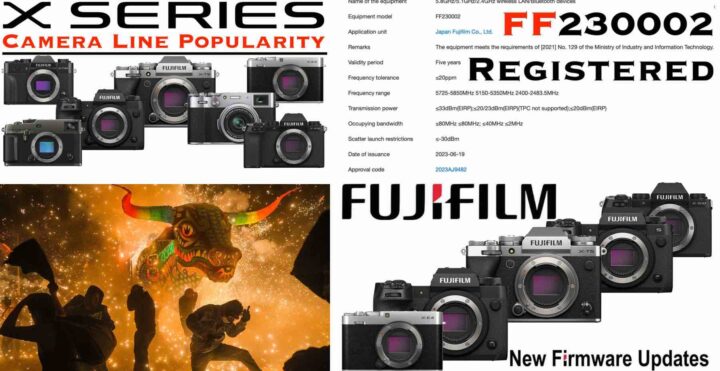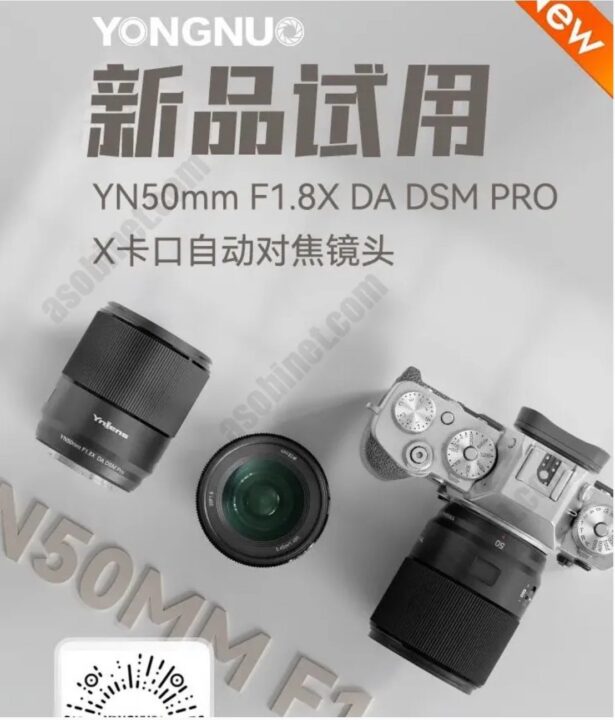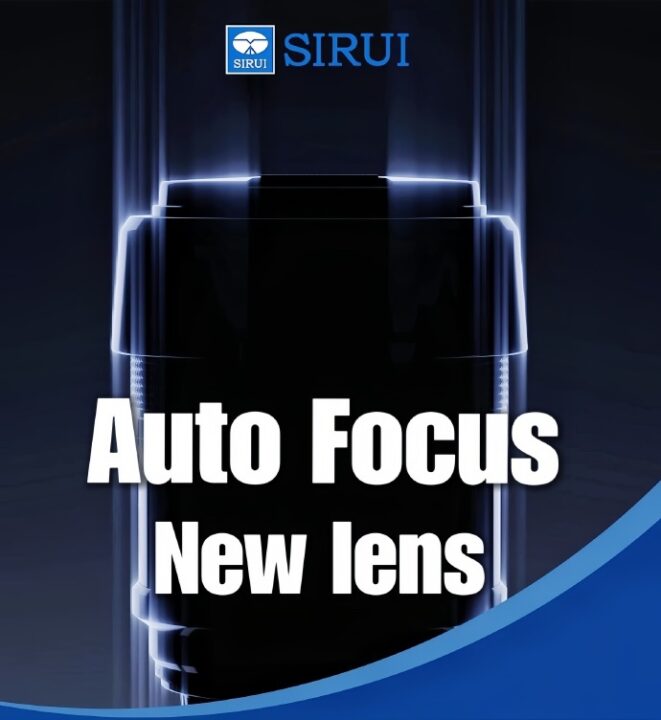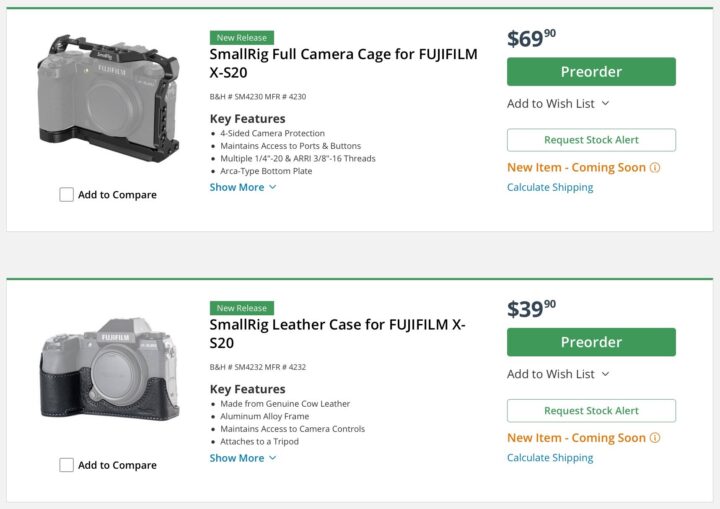SmallRig Full Camera Cage and Leather Case for Fujifilm X-S20
SmallRig has launched the following two products for the Fujifilm X-S20:
- SmallRig Full Camera Cage for Fujifilm X-S20
BHphoto / Amazon - SmallRig Leather Case for Fujifilm X-S20
BHphoto / Amazon
Get Yours
- Fujifilm X-S20:
→ USA: BHphoto / AmazonUS / Adorama / Moment
→ Worldwide: AmazonCA / Amazon of Your Country
→ UK: AmazonUK / WexUK / ParkCameraUK
→ EU: AmazonDE / AmazonIT / AmazonFR / AmazonES / CalumetDE / FotoErhardt / Fotokoch / PCHstore - Fujinon XF8mmF3.5:
→ USA: BHphoto / AmazonUS / Adorama / Moment
→ Worldwide: AmazonCA / Amazon of Your Country
→ UK: AmazonUK / WexUK / ParkCameraUK
→ EU: AmazonDE / AmazonIT / AmazonFR / AmazonES / CalumetDE / FotoErhardt / Fotokoch / PCHstore
STAY TUNED: Date of Next Fujifilm X Summit to be Unveiled TODAY
We have the date of the next Fujifilm X Summit.
Right now I am on a short break while driving through the center of Italy. So we will share it with you at 10AM New York time (4PM Berlin Time).
You’ll get the rumor…
But…
if you decide to follow the big unveil on my YouTube channel, then you’ll get the rumor from my favorite Mediterrenean sea town (short guide included).
This means that in terms of rumors, you won’t miss anything if you don’t follow me on YouTube.
But if you love Italy, the Mediterrenean sea, awesome little towns, pristine water and great sunsets, then make sure to check out the rumor also on YouTube, as I will tell you the name of the town 99% of you never heard about, and after my video you’ll wonder how in all these years you could have missed such an awesome spot in Italy.
Above is the video that will go online shortly. Enable the reminder in order not to miss when it goes online.
And guys, this is the the very beginning of a long new rumor chapter here on FujiRumors. ;)
Fun times are coming ;).
Fujifilm Facebook Groups
New Firmware, Talking Velvia, New Camera Registrations, X100V Struggles, X-T5 Rise and More – Top June Articles and Videos

Here are the top 10 articles for June:
- New Firmware Updates for Fujifilm X-T5, X-H2, X-H2S, X-E4 and X-S10
- Welcome to the World of VELVIA Film Simulation
- Fujifilm FF230002 Registration Found – Expect X-Pro4, X-E5, X-S30, X-T6, X-T40, X-H3, X-H3S, X80, X100VI (X200) and GFX50R Successor Rumors to Magically Appear ;)
- Fujifilm X100V Orders Suspended at BHphoto, Blocked in Japan and What it Could Mean for the X100V Successor
- The Impressive Rise of the Fujifilm X-T5 (Despite X-H2 Competition) and Popularity of X Series Camera Lines – Poll Results
- It’s All About the Latest and Greatest (X-T5, X-H2, X-H2S, X-S20) – Roundup
- WANTED: New Fujifilm X Mount Roadmap Needed (and Why)!
- Fujifilm GFX100 Firmware 5.00 New Features Guide Leaked
- Viltrox 27mm f/1.2 PRO XF Lens “Coming Soon” – Teaser
- Fujifilm X-Pro4 Fantasies – Your Dreams Here!
And here are the June Youtube videos ranked by popularity. The 2nd and 4th video are from the Dolomites… they might be worth to watch just for the scenery ;).
Yongnuo YN 50mm f/1.8X DA DSM PRO Coming Soon

It’s months now that we report about the upcoming Yongnuo autofocus lenses for Fujifilm X mount. In case you missed the previous episodes, here is what will come:
- Yongnuo 11mm f/1.8
- Yongnuo 23mm f/1.4
- Yongnuo 33mm f/1.4
- Yongnuo 50mm f/1.8
- Yongnuo 56mm f/1.4
We also have shared lots of images of these lenses:
- LEAKED IMAGES of Five Yongnuo Autofocus Fujifilm X Mount Lenses Coming (including 11mm f/2.8 and 50mm f/1.8)
- Yongnuo 50mm F1.8X PRO for Fujifilm X Mount Coming in June and New Image on X-H2S
And now the Japanese website Asobinet reports that the Yongnuo will be released soon and a preliminary “experience meeting” is about to be held in China.
They also shared an image that you can see above.
It will be based on the lens design of the current full frame Yongnuo YN50mm F1.8 DF DSM and the selling price will be of 1799 yuan (converted to $247).
Some of these new Yongnuo lenses are going to have some stiff competition:
Yongnuo 11mm f/1.8 vs…
Yongnuo 23mm f/1.4 vs…
Yongnuo 33mm f/1.4 vs…
Yongnuo 50mm f/1.8 vs…
Yongnuo 56mm f/1.4 vs…
Good luck Yongnuo!



